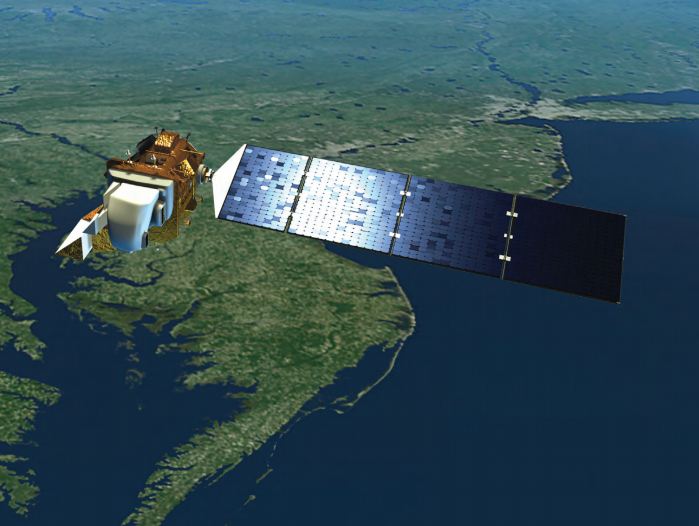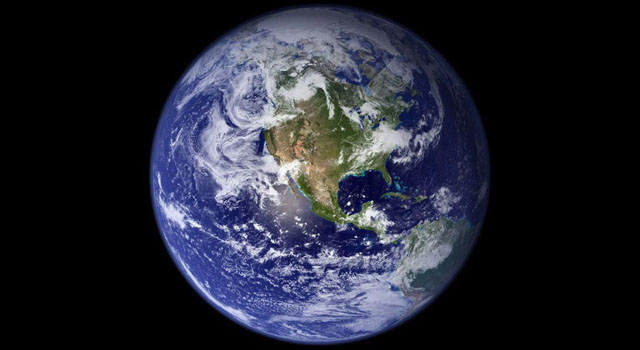NASA Sets Launch Date for New Earth-Observing Satellite

NASA announced today (Jan. 10) the upcoming launch of a new satellite, the Landsat Data Continuity Mission (LDCM), to monitor Earth's landscape and the changes to it.
The new satellite, scheduled to launch Feb. 11, will take the place of the Landsat 5 satellite, which is to be decommissioned in the coming months, the U.S. Geological Survey reported in December.
LDCM carries two new instruments, the Operational Land Imager and the Thermal Infrared Sensor. These will allow it to create better images than any previous Landsat mission and make it "more sensitive to changes in land surface over time," said Jim Irons, LDCM project scientist, during a news conference today.
The satellite is 19 feet (6 meters) long and weighs about 6,000 pounds (2,720 kilograms), making it the size of a large SUV, said Ken Schwer, LDCM project manager based at NASA's Goddard Space Flight Center in Greenbelt, Md., along with Irons. LDCM's size is relatively large for an Earth-observing satellite, Schwer said.
LDCM will orbit 438 miles (705 kilometers) over the Earth's surface, and follow the same track as Landsat 5, to pick up where the old satellite leaves off, Schwer said. [Amazing Astronaut Images of Earth]
The satellite has already been transported to the Vandenberg Air Force Base in California, where it will be launched. Afterward, it will be renamed Landsat 8, and will be operated by the U.S. Geological Survey (USGS). It will circle the Earth about 14 times daily and return over each location on Earth every 16 days as its orbit moves over different latitudes, according to NASA.
The data the satellite collects will be free to the public and used for a variety of purposes. It will help monitor tropical deforestation, urban expansion, impacts of natural disasters and glacial melting, Irons said. As has been the case during the Landsat program's 40-year history, information collected will help make informed decisions regarding land use for urban areas and agriculture, and to help manage natural resources such as forests and fresh water, he said.
Get the Space.com Newsletter
Breaking space news, the latest updates on rocket launches, skywatching events and more!
"I don't think it's hyperbole to suggest that all 7 billion of us will benefit from the LDCM," Irons said.

"Any major event since 1984 that left a mark on this Earth larger than a football field was likely recorded by Landsat 5, whether it was a hurricane, a tsunami, a wildfire, deforestation or an oil spill," USGS Director Marcia McNutt said in the statement. "We look forward to a long and productive continuation of the Landsat program, but it is unlikely there will ever be another satellite that matches the outstanding longevity of Landsat 5."
The satellite monitored the effects of the devastating floods along the Mississippi River in 2011, snapped an image of the path of a tornado in Massachusetts that same year, and helped the effort to battle raging wildfires in Arizona.
LDCM, like Landsat 5, is a collaboration between NASA and the USGS that will continue the Landsat program's 40-year data record of monitoring Earth from space. Landsat 5 has orbited the globe more than 150,000 times and recorded more than 2.5 million images.
This story was provided by OurAmazingPlanet, a sister site to SPACE.com. Reach Douglas Main at dmain@techmedianetwork.com. Follow him on Twitter @Douglas_Main. Follow OurAmazingPlanet on Twitter @OAPlanet. We're also on Facebook and Google+.
Join our Space Forums to keep talking space on the latest missions, night sky and more! And if you have a news tip, correction or comment, let us know at: community@space.com.

Douglas Main loves the weird and wonderful world of science, digging into amazing Planet Earth discoveries and wacky animal findings (from marsupials mating themselves to death to zombie worms to tear-drinking butterflies). He is now a senior writer and editor for National Geographic, focusing on wildlife, nature and the environment.










